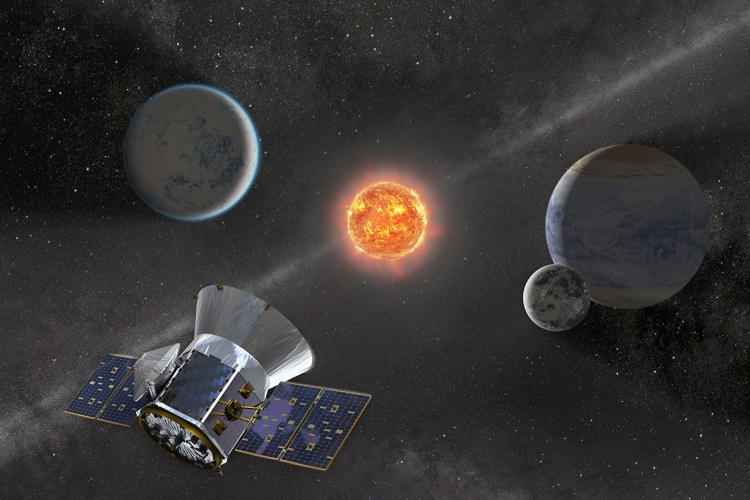What goes around, comes around … every 13.7 days.
An Aerospace team helped develop the orbit for NASA’s recently launched Transiting Exoplanet Survey Satellite (TESS), which will look for exoplanets, that is, planets outside our solar system.
The two-year mission, which launched April 18 from Cape Canaveral Air Force Station on a Falcon 9, will examine more than 85 percent of the sky, looking for planets orbiting 200,000 of our brightest neighboring stars.
According to NASA, “TESS will operate on a unique high Earth orbit in a 2:1 resonance orbit with the moon, which has never been used before. The orbit was tailored for the TESS mission by engineers at NASA’s Goddard Space Flight Center and The Aerospace Corporation.”
TESS’ planet-hunting technique is to stare at a distant star to determine if tiny reductions in light can be observed — indicating that a planet has passed in front of the star. As the TESS team was weighing mission design options to do this, it became apparent that the orbit chosen for the TESS spacecraft would play a critical role in achieving a successful mission.
TESS Orbit
Aerospace collaborated with team members in the development of an orbit called a “P/2 HEO” orbit, which has that name because it is a highly elliptical orbit with an orbital period half that of the moon (i.e., 13.7 days).
This orbit allows the TESS spacecraft to spend lengthy periods far from earth to give unobstructed views of the celestial sphere while avoiding or controlling for stray light from the earth, sun and moon. It also minimizes gravitational perturbations from the moon and earth, and provides a low radiation, thermally stable environment for its four wide-field-of-view cameras.
These factors combine to help produce unobstructed continuous viewing opportunities with extremely stable pointing, which is necessary to achieve the planet-hunting mission.
TESS is expected to discover around 20,000 planets, including some the size of Earth. According to NASA, “TESS will find the most promising exoplanets orbiting our nearest and brightest stars, giving future researchers a rich set of new targets for more comprehensive follow-up studies.”
To learn more about TESS, check out NASA’s website.

